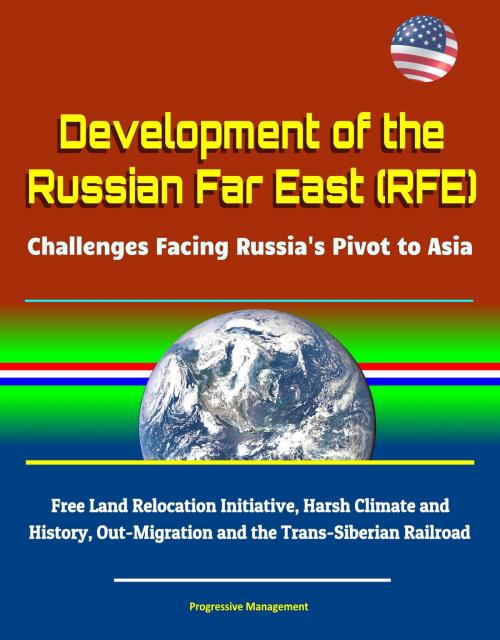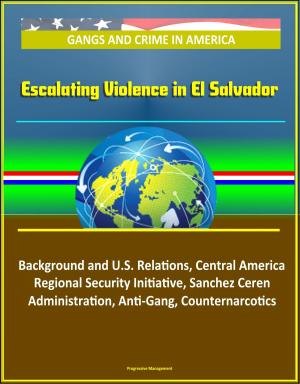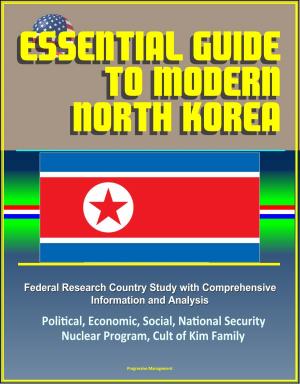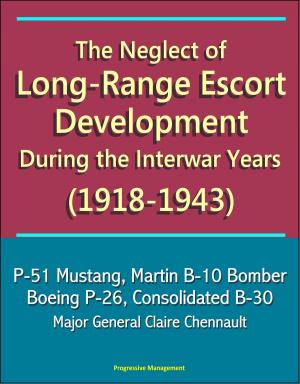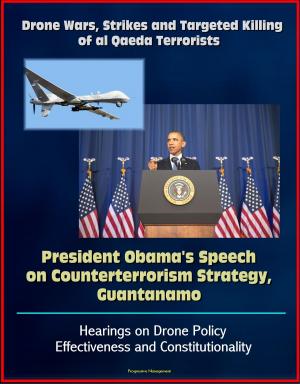Development of the Russian Far East (RFE): Challenges Facing Russia's Pivot to Asia - Free Land Relocation Initiative, Harsh Climate and History, Out-Migration and the Trans-Siberian Railroad
Nonfiction, History, Asian, Asia, Russia| Author: | Progressive Management | ISBN: | 9780463462553 |
| Publisher: | Progressive Management | Publication: | June 9, 2018 |
| Imprint: | Smashwords Edition | Language: | English |
| Author: | Progressive Management |
| ISBN: | 9780463462553 |
| Publisher: | Progressive Management |
| Publication: | June 9, 2018 |
| Imprint: | Smashwords Edition |
| Language: | English |
This excellent 2018 report has been professionally converted for accurate flowing-text e-book format reproduction.
In the face of Western sanctions after Russia's invasion of Ukraine, President Putin has shifted the Kremlin's focus toward Asia to stimulate Russia's economic development. To aid in this process, he has prioritized developing the Russian Far East (RFE) by populating the region through multiple incentives, including a federal law granting a hectare of free land to those willing to relocate to the RFE. However, the plan has met several challenges, due to inadequate infrastructure to attract citizens from developed western regions of the country, limited employment opportunities, and a lack of domestic and foreign investment. These problems are closely related to one another and must be resolved simultaneously for development to succeed. Russian policy reforms, better incentives, more favorable immigration policies for foreigners (including neighboring Chinese), and a closer working relationship between the Kremlin and the local administration to decrease corruption will all be needed if Russia is going to have any hopes of deriving meaningful benefits from its pivot to Asia.
I. INTRODUCTION * A. MAJOR RESEARCH QUESTION * B. SIGNIFICANCE OF THE RESEARCH QUESTION * C. LITERATURE REVIEW * 1. Environment * 2. Domestic Economy * 3. Foreign Investment * D. POTENTIAL EXPLANATIONS AND HYPOTHESES * E. RESEARCH DESIGN * F. THESIS OVERVIEW * II. SETTLEMENT IN THE RUSSIAN FAR EAST * A. NO MAN'S LAND: THE RUSSIAN FAR EAST * B. HISTORICAL BACKGROUND: CHANGING OWNERSHIP OF THE RFE * 1. Russia's Expansion to the Far East * 2. Soviet Union's Plan for Its Far East * C. POPULATION CHALLENGES: OUT-MIGRATION AND IMMIGRATION * 1. Russian Immigration: Organization and Policy * 2. Out-migration from the Region * 3. Immigration: Could It Be a Solution? * 4. Post-Soviet Immigration * D. SOLUTION TO POPULATE THE LAND: FREE LAND TO ALL RUSSIANS. * 1. The Free Land Project in the News * 2. Free Land in the Russian Far East: Gift or Burden? * 3. Implementation of the Free Land Law * 4. Challenges of the Far Eastern Hectare Project * 5. Unsuccessful Initiative: Non-existent Benefits Package * III. INTERNAL FACTORS AFFECTING THE DEVELOPMENT OF THE RUSSIAN FAR EAST * A. ENVIRONMENTAL CHALLENGE: THE HARSH CLIMATE * B. ECONOMIC CONDITIONS * 1. Tsarist Russia's Economic Development of the RFE * 2. The Transport System—The Lifeline for Economic Prosperity * 3. Economic Development: Priority or Periphery? * C. ILLEGAL ACTIVITIES, ENVIRONMENTAL DESTRUCTION, AND ENSUING POLLUTION * 1. Illegal Activities with No Regard to the Environment * 2. Proposed Solution to Resolve Issues Related to the Region's Periphery Status * IV. THE POTENTIAL ROLE OF NORTHEAST ASIA IN THE DEVELOPMENT OF THE RUSSIAN FAR EAST * A. RUSSIAN FEDERATION * B. CHINA * C. JAPAN * D. SOUTH KOREA (ROK) * E. NORTH KOREA (DPRK) * F. PROSPECTS OF REFORM IN THE RUSSIAN FAR EAST * V. CONCLUSION AND RECOMMENDATIONS * A. SUMMARY OF RESEARCH: RUSSIA'S PIVOT TO ASIA * B. FINDINGS: ROOT CAUSES OF THESE CHALLENGES * C. IMPLICATIONS OF RESEARCH AND RECOMMENDATIONS: WHAT CAN RUSSIA DO?
This excellent 2018 report has been professionally converted for accurate flowing-text e-book format reproduction.
In the face of Western sanctions after Russia's invasion of Ukraine, President Putin has shifted the Kremlin's focus toward Asia to stimulate Russia's economic development. To aid in this process, he has prioritized developing the Russian Far East (RFE) by populating the region through multiple incentives, including a federal law granting a hectare of free land to those willing to relocate to the RFE. However, the plan has met several challenges, due to inadequate infrastructure to attract citizens from developed western regions of the country, limited employment opportunities, and a lack of domestic and foreign investment. These problems are closely related to one another and must be resolved simultaneously for development to succeed. Russian policy reforms, better incentives, more favorable immigration policies for foreigners (including neighboring Chinese), and a closer working relationship between the Kremlin and the local administration to decrease corruption will all be needed if Russia is going to have any hopes of deriving meaningful benefits from its pivot to Asia.
I. INTRODUCTION * A. MAJOR RESEARCH QUESTION * B. SIGNIFICANCE OF THE RESEARCH QUESTION * C. LITERATURE REVIEW * 1. Environment * 2. Domestic Economy * 3. Foreign Investment * D. POTENTIAL EXPLANATIONS AND HYPOTHESES * E. RESEARCH DESIGN * F. THESIS OVERVIEW * II. SETTLEMENT IN THE RUSSIAN FAR EAST * A. NO MAN'S LAND: THE RUSSIAN FAR EAST * B. HISTORICAL BACKGROUND: CHANGING OWNERSHIP OF THE RFE * 1. Russia's Expansion to the Far East * 2. Soviet Union's Plan for Its Far East * C. POPULATION CHALLENGES: OUT-MIGRATION AND IMMIGRATION * 1. Russian Immigration: Organization and Policy * 2. Out-migration from the Region * 3. Immigration: Could It Be a Solution? * 4. Post-Soviet Immigration * D. SOLUTION TO POPULATE THE LAND: FREE LAND TO ALL RUSSIANS. * 1. The Free Land Project in the News * 2. Free Land in the Russian Far East: Gift or Burden? * 3. Implementation of the Free Land Law * 4. Challenges of the Far Eastern Hectare Project * 5. Unsuccessful Initiative: Non-existent Benefits Package * III. INTERNAL FACTORS AFFECTING THE DEVELOPMENT OF THE RUSSIAN FAR EAST * A. ENVIRONMENTAL CHALLENGE: THE HARSH CLIMATE * B. ECONOMIC CONDITIONS * 1. Tsarist Russia's Economic Development of the RFE * 2. The Transport System—The Lifeline for Economic Prosperity * 3. Economic Development: Priority or Periphery? * C. ILLEGAL ACTIVITIES, ENVIRONMENTAL DESTRUCTION, AND ENSUING POLLUTION * 1. Illegal Activities with No Regard to the Environment * 2. Proposed Solution to Resolve Issues Related to the Region's Periphery Status * IV. THE POTENTIAL ROLE OF NORTHEAST ASIA IN THE DEVELOPMENT OF THE RUSSIAN FAR EAST * A. RUSSIAN FEDERATION * B. CHINA * C. JAPAN * D. SOUTH KOREA (ROK) * E. NORTH KOREA (DPRK) * F. PROSPECTS OF REFORM IN THE RUSSIAN FAR EAST * V. CONCLUSION AND RECOMMENDATIONS * A. SUMMARY OF RESEARCH: RUSSIA'S PIVOT TO ASIA * B. FINDINGS: ROOT CAUSES OF THESE CHALLENGES * C. IMPLICATIONS OF RESEARCH AND RECOMMENDATIONS: WHAT CAN RUSSIA DO?
